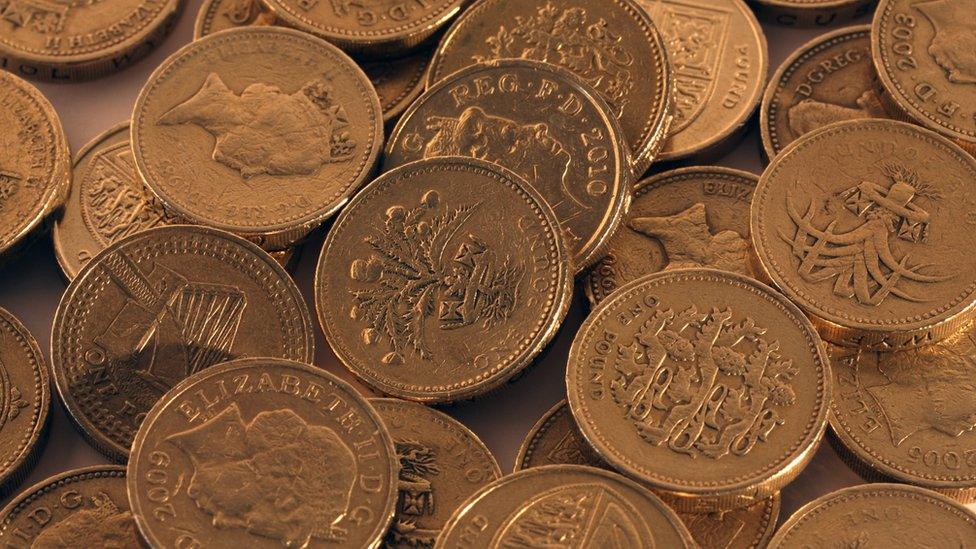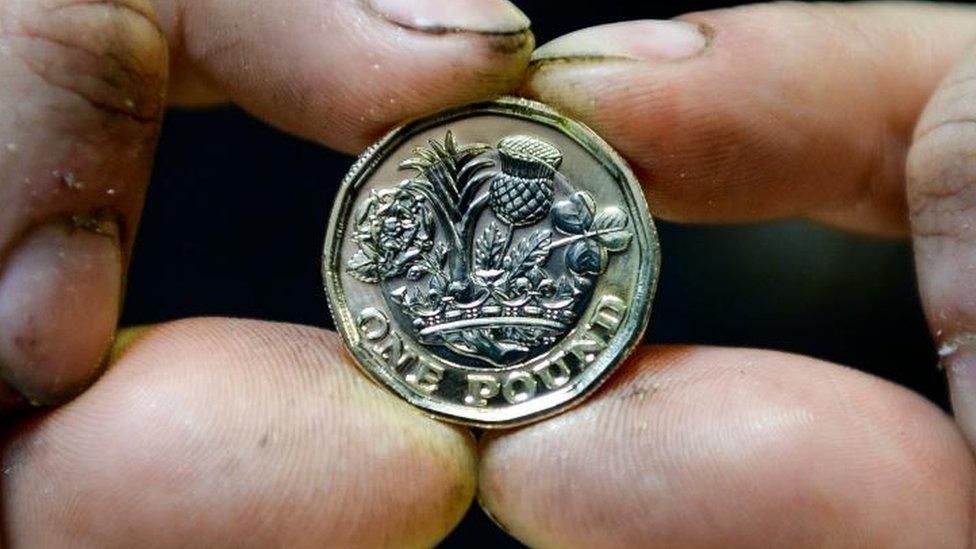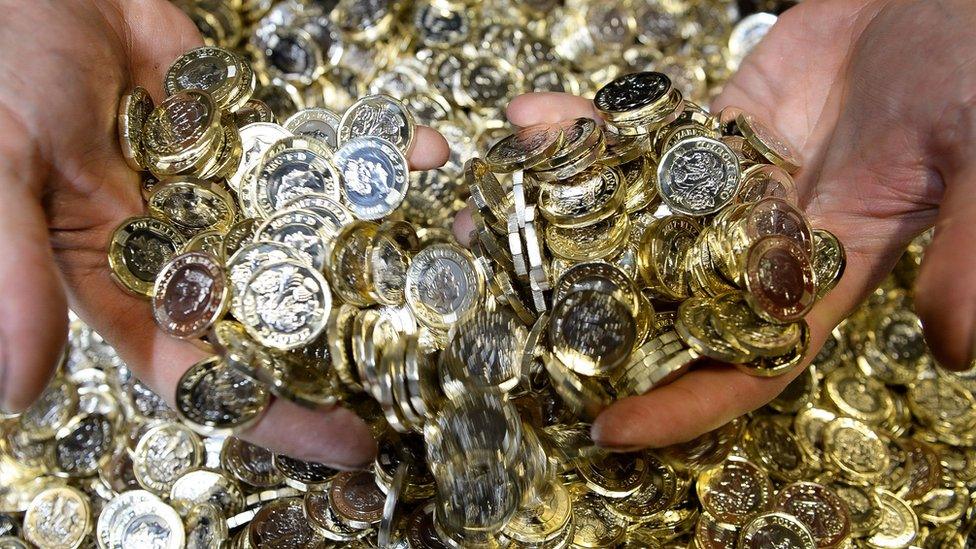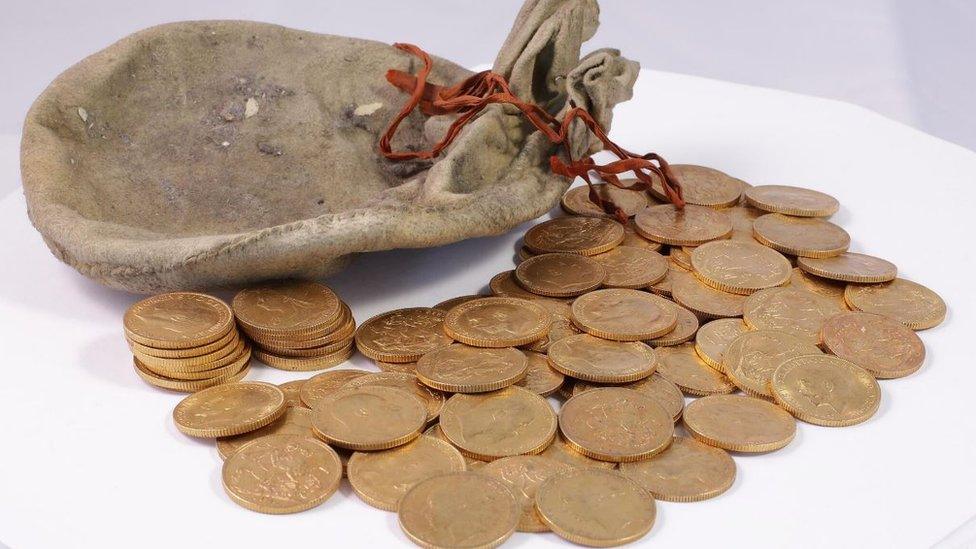What a £1 coin could have made since 1983
- Published

Investing a £1 coin when it entered circulation in 1983 could have seen its real value grow more than tenfold, according to an investment firm.
The current £1 coin will be discontinued this year, as a 12-sided coin enters circulation on 28 March.
Asset manager M&G has calculated that, if left in a piggy bank, inflation since 1983 would have corroded its buying power to the equivalent of 32p.
Investing in shares would brought a much higher return, it said.
If the £1 had been invested in shares in 1983 and tracked the rise in the FTSE all-share index, it would have had a value of £11.66 by the end of 2016, after allowing for inflation. This would have required any income to be reinvested each month - to make the most of compounding over time.

Ritu Vohora, investment director at M&G, said that the replacement of the old round pound coin was a "timely reminder" of the corrosive effects of inflation - the rising cost of living. Any investment carries a risk of losing money, unlike saving, but Ms Vohora argued that there were potential rewards.
"Our analysis shows that you can turn even a modest investment into a healthy pot of money if you are willing to accept an element of risk and are in a position to make a long-term investment," she said.
This investment in shares would outstrip investing in gold, which would have had a real value of £1.05 by the end of 2016, and a cash savings account (real value of £1.33).
However, the appeal of shares over cash was challenged by Susan Hannums, director at independent savings advice site Savingschampion.co.uk.
"For some people, cash is the most appropriate asset to hold, certainly for some of their money, but it should still be looked after properly to make sure that it works as hard as possible," she said.
"The secret to making sure that cash is not a wasted asset, is to keep switching in order to ensure it is earning the best rates of interest possible. This can prove invaluable."
The M&G calculations suggest that investing one pound in government bonds would have seen it grow to a real value of £4.93 by the end of 2016.
Putting the money in UK residential property would have seen the real value grow to £2.42 over the same period, M&G said.
However, this only measured the growth in value of property which, unlike shares, could not be reinvested each month, so this comparison is questionable.
- Published15 March 2017

- Published16 March 2017

- Published1 December 2016
